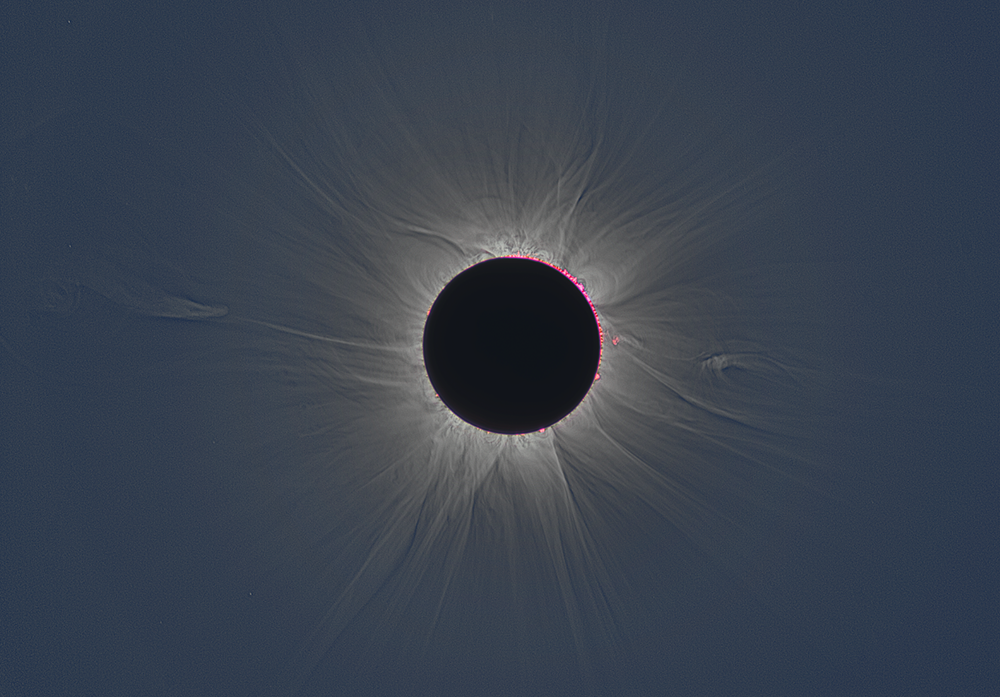A total solar eclipse, although not exactly rare on a global scale, is one of the most dramatic natural events that one can witness on Earth. Being a syzygy of the Sun, Moon, and Earth, over the course of about one hour, the Moon covers more and more of the Sun. Few people are ever within the path of totality—that narrow swath of space in which the sky gets as dark as a moonlit night in the middle of the day. See also: Eclipse; Syzygy

On August 21, 2017, the path of totality will pass through parts of 14 states coast-to-coast in the United States, spanning a stretch of between about 97 and 114 kilometers (60–71 miles) wide, and marking this particular eclipse as "The Great American Total Solar Eclipse." Experts expect large numbers of people to gather from Oregon to South Carolina to experience totality. Only through special-purpose solar filters that transmit 0.001% of the Sun's light can observers watch this phenomenon safely, because the part of the Sun that remains visible during an eclipse is so bright that it can cause eye damage. Thus, special filters with a very high optical density (5 or greater) are often inserted into "eclipse glasses" for safe viewing. When the Moon completely covers the Sun, it is safe to view the eclipse without a filter, but only for the few minutes during which the Sun's glowing atmosphere, known as the solar corona, is visible to the naked eye. See also: Absorption of electromagnetic radiation; Color filter; Solar corona; Sun; Ultraviolet radiation
During totality, scientists can study the solar corona in ways that are not possible at any other time, even from spacecraft. They will take photographs and use spectroscopy to study what the corona is made of and how hot it is. Over 75 years ago, two Swedish astrophysicists—Bengt Edlén and Hannes Alfvén—determined that the corona is about a million degrees Celsius. However, this extremely high temperature is still somewhat of a mystery. The Sun's magnetic field heats the corona, but exactly how this occurs is one of the topics that astronomers investigate at eclipses. See also: Astronomy; Solar magnetic field; Spectroscopy
Millions of people will pause on August 21 as the sky grows dark, and a discontinuous line of brilliant beads of light will appear on the Moon's edge. Named "Baily's beads" after the 19th-century astronomer Francis Baily, these spots are caused by sunlight showing through between mountains on the Moon's horizon as the Moon moves across the Sun's disk. Ultimately, the last bead will appear so dazzling that it is known as the diamond-ring effect, and the solar corona will come into view. Outside the path of totality, partial eclipses will be visible to viewers from mid-northern South America through all of North America, into Siberia, and into parts of Africa and Europe. See also: Moon; North America; Occultation





